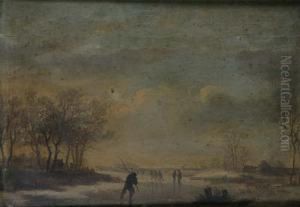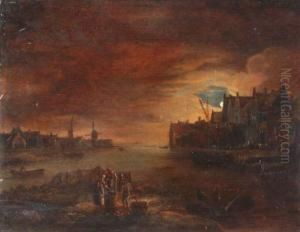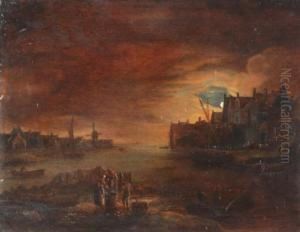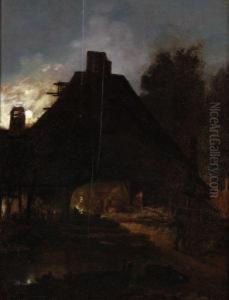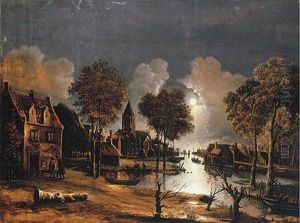Johannes Van Der Neer Paintings
Johannes van der Neer, also known as Jan or Aernout van der Neer, was a Dutch landscape painter during the Golden Age of Dutch painting. Born in Gorinchem (or Gorcum), Netherlands, in 1603, he became renowned for his picturesque winter scenes, night landscapes, and serene views of rivers and estuaries at dawn and dusk.
Van der Neer's early life is somewhat obscure, and little is known about his artistic training. It is speculated that he may have been a pupil of landscape painter Aert van der Neer (who, despite the shared surname, was not a close relative), but this has not been conclusively established. What is evident is that by the 1630s, he established himself as an independent artist in Amsterdam.
Throughout his career, van der Neer displayed a keen interest in the interplay of light and atmosphere. He was particularly skilled in capturing the reflective surfaces of water and the nuanced variations of skylight at different times of the day. His winter landscapes, often populated with figures skating on frozen waterways, are characterized by a sense of tranquility and a meticulous attention to the effects of light on snow and ice.
Van der Neer's night scenes are equally remarkable for their use of chiaroscuro and the depiction of artificial light sources, such as the moon or lanterns, which illuminate the darkness and guide the viewer's eye through the composition. These nocturnes demonstrated an innovative approach to painting that was quite advanced for his time.
Despite his artistic talents, Johannes van der Neer did not achieve significant financial success during his lifetime. He struggled with debt and was declared bankrupt in 1662. In his later years, he moved to Rotterdam, where he continued to paint until his death in 1677. Today, van der Neer's works are held in high esteem and can be found in major museums around the world, including the Rijksmuseum in Amsterdam, the Louvre in Paris, and the National Gallery in London.
Van der Neer's contribution to Dutch landscape painting lies in his unique ability to convey the serene beauty of the Dutch countryside and his innovative use of light. His works have been celebrated for their poetic quality and have influenced subsequent generations of landscape artists.
